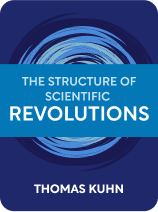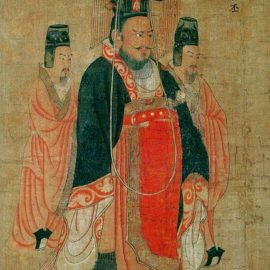

This article is an excerpt from the Shortform book guide to "The Structure Of Scientific Revolutions" by Thomas Kuhn. Shortform has the world's best summaries and analyses of books you should be reading.
Like this article? Sign up for a free trial here .
What are some paradigm shift examples in science? How did these shifts change the way we see the word?
There have been many paradigm shift examples in science that completely changed the way people understood and approached the world. These revolutions happened because science is not a straightforward path toward what’s “true.” It’s more like a path away from what’s wrong.
Here is a brief overview of the most notable paradigm shift examples in science.
Paradigm Shift Examples in Science
The history of science has no shortage of paradigm shift examples that have completely transformed the way we see the world. There was a mathematical revolution when the Greeks created proofs to show not only that certain mathematical formulae and postulates work, but why they work. Classical science had a revolution when laboratories and experiments became the preferred way of examining the world, a practice that may have begun with Galileo.
Going back to the 17th century, there was a series of scientific revolutions and changing paradigms in the study of light. Before the 17th century, there were many competing schools of thought and no one universally-accepted paradigm. There were so many different schools of thought about light because, at the time, there were no common beliefs or understandings that they could take for granted. These different schools all made significant discoveries that helped Newton to create the first almost-universally accepted model of light in the 17th century. However, before that model was developed in the early 20th century, most physics books taught that light was a wave. If we go back even further, scientists believed light was made of particles and looked for evidence that it puts pressure on solid objects.
Karl Popper’s work can also be considered a paradigm shift. Popper taught that scientists come up with broad, testable ideas, and almost inevitably prove them wrong. Then they refine their ideas based on the new information and try again. This cycle of conjectures and refutations is similar to the idea of scientific revolutions, just on a much smaller scale.
In the 19th century, entire fields of science were codified and sorted into paradigms, including heat, light, and electricity. Phenomena that had baffled scientists could now be categorized and understood. This was around the time of the Industrial Revolution, and likely a direct cause of it. There have been more since then, including Einstein’s theory of relativity and Planck’s first steps into quantum theory.

———End of Preview———
Like what you just read? Read the rest of the world's best book summary and analysis of Thomas Kuhn's "The Structure Of Scientific Revolutions" at Shortform .
Here's what you'll find in our full The Structure Of Scientific Revolutions summary :
- How scientific paradigms evolve and become replaced with new paradigms
- Why science is more about figuring out what isn't right
- How throwing out past achievements allows for scientific progress






